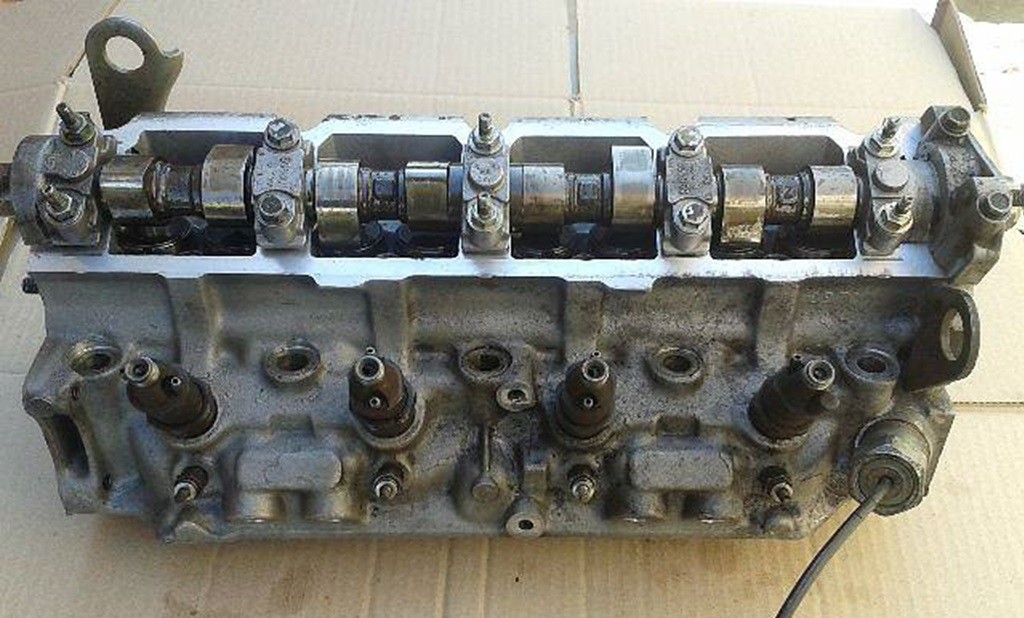
Renault F8M engine
Content
In the early 80s, Renault began to develop a new power unit for its own R 9 car.
Description
In December 1982, a group of Renault engineers led by George Duane introduced a diesel engine, designated the F8M. It was a simple four-cylinder aspirated 1,6-liter, 55 hp. with a torque of 100 Nm, running on diesel fuel.
In the same year, the unit was put into production. The engine turned out to be so successful that it did not leave the assembly line until 1994.

Installed on Renault cars:
- R 9 (1983-1988);
- R 11 (1983-1988);
- R 5 (1985-1996);
- Express (1985-1994).
It was additionally installed on the Volvo 340 and 360, but in this case it had the designation D16.
The cylinder block is made of high-strength cast iron, not sleeved. Aluminum cylinder head, with one camshaft and 8 valves without hydraulic lifters.
Timing belt drive. Crankshaft, pistons and connecting rods are standard. Devices such as catalysts were missing.
Technical specifications
| Manufacturer | Renault Group |
| Engine volume, cm³ | 1595 |
| Power, hp from | 55 |
| Torque, Nm | 100 |
| Compression ratio | 22.5 |
| Cylinder block | cast iron |
| Cylinder head | aluminum |
| The order of the cylinders | 1-3-4-2 |
| Cylinder diameter, mm | 78 |
| The piston stroke, mm | 83.5 |
| Number of valves per cylinder | 2 |
| Timing drive | belt |
| Hydraulic compensators | no |
| Turbocharging | no |
| Fuel system | fore cameras |
| TNVD | mechanical Bosch VE |
| Fuel | DT (diesel fuel) |
| Environmental standards | Euro 0 |
| Resource, outside. km | 150 |
| Location | transverse |
What do the modifications F8M 700, 720, 730, 736, 760 mean
The technical characteristics of the ICE modifications do not differ from the base model. The essence of the changes was reduced to changes in the attachment of the motor to cars and connections to the transmission (manual transmission or automatic transmission).
In addition, in 1987 the cylinder head was somewhat modernized, but in general this only harmed the motor - cracks began to appear in the prechambers.

| Engine code | Power | Torque | Compression ratio | Years of issue | Installed |
|---|---|---|---|---|---|
| F8M 700 | 55 l. s at 4800 rpm | 100 | 22.5 | 1983-1988 | Renault R9 I, R 11 I |
| F8M 720 | 55 l. s at 4800 rpm | 100 | 22.5 | 1984-1986 | Renault R5 II, R 9, R 11, Rapid |
| F8M 730 | 55 l. s at 4800 rpm | 100 | 22.5 | 1984-1986 | Renault R5 II |
| F8M 736 | 55 l. s at 4800 rpm | 100 | 22.5 | 1985-1994 | Express I, Rapid |
| F8M 760 | 55 l. s at 4800 rpm | 100 | 22.5 | 1986-1998 | Express I, Extra I |
Reliability, weaknesses, maintainability
Reliability
Despite some shortcomings, the internal combustion engine turned out to be quite reliable, economical and unpretentious in terms of fuel quality. It is distinguished by its simple design and ease of maintenance.
With proper operation, the motor easily nurses 500 thousand km without repair, which is more than three times the resource declared by the manufacturer.
The high-pressure fuel pump of the engine is distinguished by high reliability. As a rule, it does not fail.
Weak spots
They are found in every, even the most flawless motor. F8M is no exception.
The engine is afraid of overheating. In this case, a violation of the geometry of the cylinder head is inevitable.
Not a small danger is a broken timing belt. The meeting of the piston with the valves will also cause serious engine repairs.
Air leaks in the fuel system are not uncommon. Here, first of all, the fault falls on cracking pipes.
And, perhaps, the last weak point is the electrician. Often the wiring does not withstand the load, which leads to its failure.
Maintainability
The simple design of the unit allows you to repair it in any garage. Spare parts are also no problem.
The general rule to repair only with original parts also applies to this motor.
Given the high cost of original spare parts, it is worth considering the feasibility of repair. Sometimes it is easier to purchase a contract engine for 10-30 thousand rubles than to repair an old one.
The F8M engine was the first in the history of Renault diesel engines installed in passenger cars.

